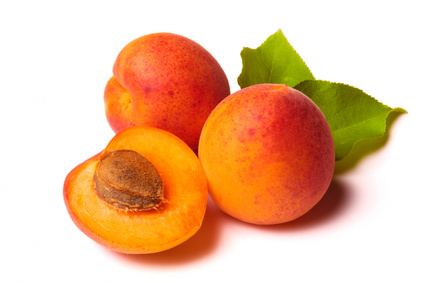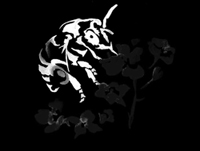Apricots (Prunus armeniaca)

Mating & Breeding System: All flowers in the genus Prunus are similar to those of apple and pear, except that they only possess one style and one ovary containing a pair of ovules. Most apricot cultivars are self-compatible and do not require planting with pollenizers, although there are some exceptions (i.e., Vivagold). Insects may still play a large role in moving pollen. Due to the climate in Ontario, there is a limited number of suitable cultivars available, particularly those that have been developed for disease resistance (bacterial spot) and delayed bloom to avoid frost damage.
Pollination, Quality & Yield: While apricot is self-fertile and does not require pollinizers in the orchard, the flowers of apricot are not designed to be pollinated by wind, and the benefit of pollen movement by insects in the sheltered conditions of the orchard may improve productivity. Growers should note, however, that it is possible in self-compatible stone fruit crops for "over-pollination" to occur. If this happens, there will be an overly heavy fruit set and high yield by weight. However, as the trees attempt to mature too many fruits for the available resources, a high proportion of fruit are undersized and therefore of reduced value. Heavy fruit set can also result in physical damage to the trees. If over-pollination is a problem in a particular orchard, growers may wish to reduce or eliminate their use of supplementary pollination services.
Pollination Recommendations: Use of honey bees on apricot in Ontario is considered "optional", but if a self-sterile cultivar is being grown or pollination is poor in an orchard honey bees may be used at a rate of 2.5 colonies per hectare. Due to the early bloom period of apricot, when frost and inclement weather is still a concern in Ontario, the hive or domicile opening should face to the south, to facilitate warming in the morning and encourage bee activity. Both bumble bees and blue orchard bees have demonstrated potential for pollinating such crops, although research is necessary into their effectiveness for apricot in Ontario. Wild bees and flies are may also be valuable, particularly in small orchards adjacent to suitable wild habitat. Unless poor pollination is an evident problem in a particular orchard, growers may choose to avoid the use of managed pollinators.
References
Bosch, J. & Kemp, W.P. 1999. Exceptional cherry production in an orchard pollinated with blue orchard bees. Bee World 80:163-173.
Bosch, J., Kemp, W.P., & Trostle, G.E. 2006. Bee population returns and cherry yields in an orchard pollinated with Osmia lignaria (Hymenoptera: Megachilidae). Journal of Economic Entomology 99:408-413.
Kevan, P.G. 1988. Pollination, crops and bees. OMAFRA publication 72.
Milatovic, D., Nikolic, D., Rakonjac, V., & Fotiric-Aksic, M. 2010. Cross-(in)compatibility in apricot (Prunus armeniaca L.). Journal of Horticultural Science and Biotechnology 85:394-398.
Scott-Dupree, C.D., Winston, M., Hergert, G., Jay, S.C., Nelson, D., Gates, J., Termeer, B., & Otis, G. 1995. A guide to managing bees for crop pollination. Canadian Association of Professional Apiculturists, Aylesford NS.
Slingerland, K., Fisher, H., & Hunter, D. 2002b. Apricot cultivars. OMAFRA FactSheet 02-035.
Thomson, J.D. & Goodell, K. 2001. Pollen removal and deposition by honeybee and bumblebee visitors to apple and almond flowers. Journal of Applied Ecology 38:1032-1044.
